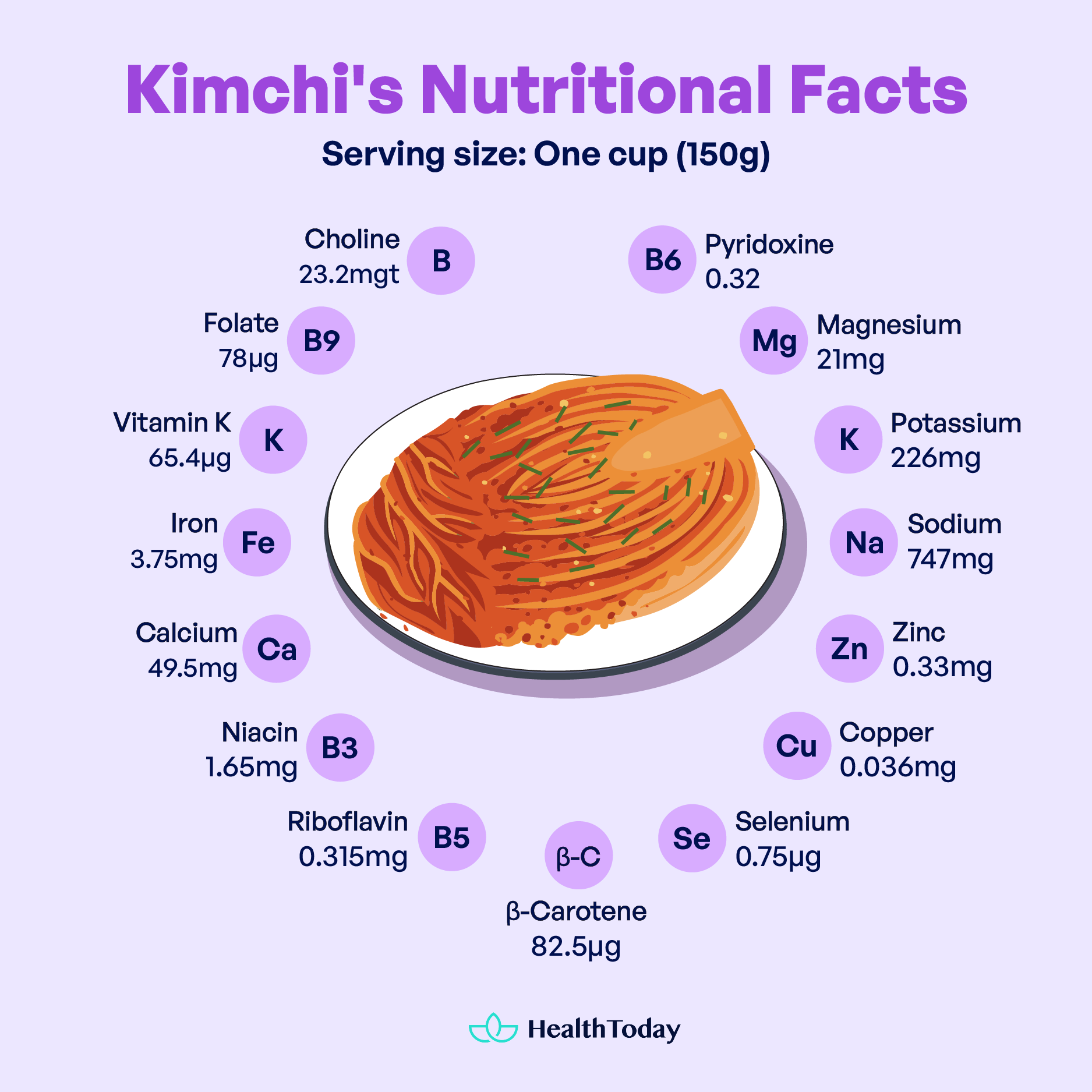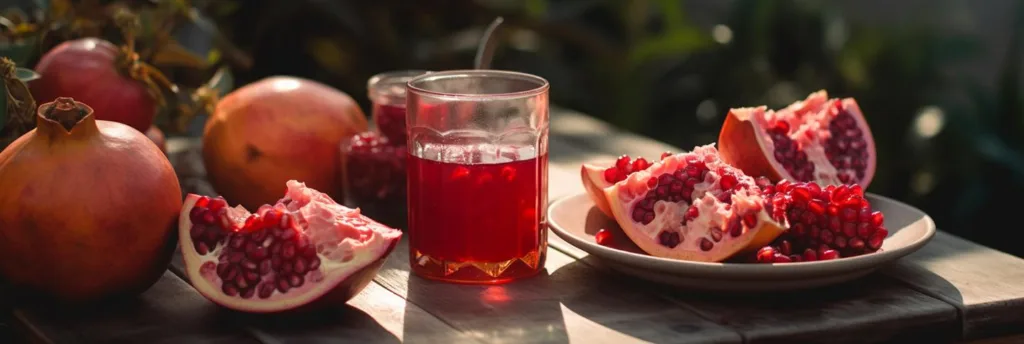Table of Contents
Kimchi is a staple fermented food and a traditional dish in Korean cuisine. Koreans consider kimchi a healthy food, but is kimchi good for diabetics?
In this article, we will discuss more about the health benefits of kimchi and whether it makes a good food option for people with diabetes.
Keep reading to the end; we have curated some delicious and diabetic-friendly kimchi recipes for you to try at home.
What is kimchi?
In Korea, there is a tradition of preparing fermented vegetables served as a side dish in most meals. Typical vegetables for making kimchi include cabbage, cucumber, or radish. Other vegetables like green onion and leaf mustard are often included in the mix.
Kimchi is more complex than it appears: Sour taste and health benefits are the results of the preliminary combination of ingredients, which include several Korean sauces, spices, and seasonings. The lactic acid bacteria (LAB) are derived from the raw ingredients that grow in number through fermentation, producing a range of compounds that alter the flavor and provide health benefits (1).
Depending on the flavorings added, it can sometimes be sweet or spicy. Gochugaru, Korean chili flakes, are often added and provide a striking red color and a spicy kick to the dish.

Nutritional facts
Although nutritious, foods such as seeds, nuts, and legumes also contain phytates, which can interfere with nutrient absorption (2). Fermentation can help increase the digestibility and absorption of nutrients from plant foods (3, 4).
Some nutrients that become better absorbed or ‘bioavailable’ include calcium, zinc, and iron (5, 6). The content of polyphenols and vitamins can also be enhanced due to fermentation (7). For example, researchers in Australia found that fermenting carrot juice can increase the amounts of carotenoids, an antioxidant precursor to vitamin A (8).


Kimchi is a great source of the following nutrients: Choline, Folate, Vitamin K, Iron, Calcium, Niacin (Vitamin B3), Riboflavin (Vitamin B5), Pyridoxine (Vitamin B6), Magnesium, Phosphorus, Potassium, Sodium, Zinc, Copper, Selenium, and beta Carotene (9).
A 150 g serving (1 cup) of kimchi contains:
- 23.2 mg of Choline
- 78 µg of Folate
- 65.4 µg of Vitamin K
- 3.75 mg of Iron
- 49.5 mg of Calcium
- 1.65 mg of Niacin (Vitamin B3)
- 0.315 mg of Riboflavin (Vitamin B5)
- 0.32 mg of Pyridoxine (Vitamin B6)
- 21 mg of Magnesium
- 36 mg of Phosphorus
- 226 mg of Potassium
- 747 mg of Sodium,
- 0.33 mg of Zinc
- 0.036 mg of Copper
- 0.75 µg of Selenium
- 82.5 µg of beta Carotene
Type 1, type 2, and prediabetes
Diabetes, more technically known as diabetes mellitus, is a metabolic disease. It is one of the most common chronic illnesses in humans, with rising prevalence, particularly in urban territories of middle and high-income countries (10, 11). There are two types— type 1 and type 2 diabetes, which are associated with high blood sugar levels, increased urination, and increased thirst.
Type 1 diabetes
Type 1, or insulin-dependent diabetes, is typically diagnosed in childhood. It is an autoimmune condition in which the body attacks the pancreatic beta cells, which produce insulin—the hormone necessary for regulating blood sugar levels. Those diagnosed with type 1 diabetes require insulin bumps to maintain stable blood sugar levels, good health, and prevent further complications (13).
Type 2 diabetes
Type 2 diabetes is an insulin-resistant disease and is typically adult-onset; however, studies show that there are increasing cases seen in late childhood and adolescence (14, 15, 16). This disease is associated with a sedentary lifestyle, poor diet, and a family history.
The following aspects comprise metabolic syndrome (17):
- Elevated cholesterol levels
- Accumulation of visceral fat
- High blood sugar levels
- Elevated blood pressure
The metabolic syndrome places individuals at greater risk of developing cardiovascular disease, among other health complications, if the conditions go untreated.
Prediabetes
Early detection can prevent the development of type 2 diabetes. Action should be taken during prediabetes when blood sugars are slightly elevated (5.6 to 6.9 mmol/mol), but there are no overt symptoms normally (18, 19).






Can diabetics eat fermented foods?
The important aspect of diabetes management is keeping blood sugar levels stable. Thus, knowing what to eat and controlling food portions becomes necessary for people with diabetes, especially for people with type 2 diabetes. Here, we’ll unveil how a traditional food like kimchi can benefit those managing diabetes.
Kimchi glycaemic index
The fermentation process reduces the glycaemic index of the fermented ingredients by converting glucose to short-chain organic acids (propionic, acetic, and lactic). Therefore, kimchi has a lower glycaemic index than the raw ingredients used to make it.
‘Resistant starch’ is a type of fiber found in many vegetables that our small intestine can’t digest. It is increased by the fermentation process used to make kimchi, and some are then selectively used by microorganisms for metabolic processes (20, 21, 22, 23).
The consumption of resistant starch also stimulates the production of substrates and metabolic processes, which help to decelerate the speed at which the food raises blood sugar levels. It can also help improve glucose processing in the body (24, 25, 26, 27, 28). Kimchi can also promote the health of the gut microbiome, helping to modulate inflammation in addition to blood sugar.
Benefits of kimchi to diabetics
Very little sugar, such as table sugar, is typically added to the fermentation starter mixture. Whereas sourdough requires ~1 tablespoon of honey or sugar for a loaf, recipes for kimchi do not tend to call for sugar at all.
Although many raw ingredients contain sugars—even vegetables—Lactobacillus bacteria in the fermentation process that produces kimchi will reduce these natural sugars by converting simple sugars into complex polysaccharides (29).
This sugar-reducing effect and the low sugar content of the original ingredients make kimchi a fantastic, low-sugar food option for diabetics.
Fermented foods are nutritionally beneficial to diabetics due to their low sugar content. In some cases, fermented foods even have a lower glycemic index than their non-fermented counterparts (e.g., sourdough). However, not all fermented foods are created equal and suitable for people with diabetes to consume in large amounts (e.g., alcohol).
Elevated blood sugar levels are among the earliest signs of diabetes and indicate that your insulin is not functioning normally to lower blood sugar levels in response to food intake. Kimchi has a beneficial effect on blood sugar levels in individuals whose levels are raised.
In a Korean study, participants who consumed kimchi over seven days experienced significant reductions in fasting blood glucose, total glucose, total cholesterol, and low-density lipoprotein (30). Another research group has demonstrated a cholesterol-lowering effect by kimchi-derived Lactobacillus bacteria through an in vitro study (31). The results suggested that kimchi is beneficial in controlling risk factors for metabolic syndrome in healthy individuals.
Who should not eat kimchi?
Unfortunately, kimchi is high in sodium, containing roughly 32 percent of the daily value (32). Therefore, individuals with high blood pressure should eat only moderate amounts of kimchi as they must carefully monitor their total sodium intake.






Other health benefits of kimchi: Probiotic action
Probiotics are bacteria that, if ingested, could provide beneficial health effects. Certain bacteria from kimchi are considered probiotics. They bring vast subsequent health benefits to kimchi, such as an improved gut microbiome, which is at the epicenter of health.
Kimchi bacterial communities
The bacteria that ferment kimchi are lactic acid bacteria—the same group used to make yogurt—although they are not necessarily the same strains. There is growing evidence that lactic acid bacteria from kimchi are not only probiotic (acting as friendly bacteria once they reach the gut) but also possess anti-obesity and immune protective effects (33).
The resulting bacterial community present and metabolites produced differ depending on the ingredients used, particularly the vegetable with which it was made (34, 35). This also impacts the taste (36).
Immune protective effects
Probiotics have shown promising evidence that they could aid the immune system (37). Live bacteria are often stressed as optimal for health benefits, meaning they can survive the barriers of the digestive system. However, dead cells have also been shown to benefit immunity as their inactivation causes them to release many components that can help fight against pathogens in the gut (38, 39).
One of the body’s most important immune surveillance mechanisms is ‘natural killer’ cells, which protect against the spread of tumor and virus-infected cells. Researchers have found that heat-killed lactic acid bacteria directly promote natural killer cell activity, promoting their removal of harmful cells in a dose-dependent manner (40). Heat-killed lactic acid has been shown to aid other immune cells, such as phagocytes (41), and immune signaling molecules that control inflammation (41).
Anticancer properties
Some strains of lactobacillus bacteria, namely Lactobacillus acidophilus from kimchi, have demonstrated their capacity as probiotics with anticancer action. L. acidophilus was resistant to acid and bile salts. It demonstrated anticancer action in vivo by slowing human colon cancer cell growth and protecting against DNA damage (42).
Another study demonstrated the molecular mechanisms: dietary kimchi intake in mice prevented colitis-related cancer by diminishing pro-inflammatory mediators (NF-kB and p65) and repressing pathways for further growth and spread of the cancer cells (ERK1/2) while activating a tumor suppressive enzyme (15-PGDH) (43).
Kimchi is a probiotic food. The good bacteria in kimchi have proven to provide functional health benefits. Among these benefits, kimchi lactobacillus bacteria have been shown to promote immune function, modulate metabolism and inflammation and offer protection against cancer growth and spread.






Alternatives to kimchi
Vinegar-based salads offer similar benefits to kimchi, as vinegar is also a fermented food product. Multiple studies have shown that it helps control blood sugar and insulin levels by preventing sharp spikes (44).
Apple cider vinegar is especially considered a healthy ingredient that may help support blood sugar control in people with type 2 diabetes (45, 46), and this healthy slaw recipe is a great way to include it in a diet while enjoying another tasty mixture of vegetables with a crisp bite and flavor.
5 Simple recipes using kimchi (Diabetic-friendly)
Simple kimchi
First, make the base of fresh kimchi. You can make kimchi from any vegetable and choose a preferred flavoring. However, this recipe for the most famous spicy kimchi uses napa cabbage. This tasty side is traditionally made in bulk to last the winter months. Follow this link for a great recipe from Maangchi)
Spicy kimchi toastie
Here is a very simple one: fill two slices of your favorite bread with 2 to 3 tablespoons of spicy kimchi, evenly spread, with 1 to 2 slices of mature cheddar cheese between two pieces of your favorite bread. You can grill the toastie in olive oil on the cooker, press it down with a spatula to melt the cheese or cover it in aluminum foil before placing it in a closed toaster or panini maker to make a toasted sandwich.
Kimchi stew
Serves 2-3
Main Ingredients:
180 g pork belly cut into bite-size pieces
1 tbsp rice wine (mirin)
Ground black pepper
¾ cup kimchi, chopped
¼ small brown onion, thinly sliced
½ stalk small green onion, thinly sliced
Two small shiitake mushrooms, thinly sliced
150g firm tofu, sliced into 1 cm thick pieces
Ingredients for Sauce base:
1 tbsp Korean chili flakes (gochugaru)
1 tbsp soy sauce
1 tsp Korean chili paste (gochujang)
¼ tsp minced garlic
Ground black pepper
Instructions:
To prepare, mix the sauce ingredients well in a bowl and marinate the pork belly with rice wine and ground black pepper for 15 minutes. Cook the kimchi on medium heat in a large pot until it has softened, then add the marinated meat. Add all the other ingredients except the green onion to the pot and add 1 cup of water.
Cook on medium-high heat until boiling, then reduce to medium heat. Mix the sauce well and continue cooking for 10 to 15 minutes until the meat is cooked. Once the meat is cooked, add the green onion and turn off the heat. Serve with rice.
(Recipe adapted from My Korean Kitchen)
Garlic sesame kimchi with tofu
Ingredients:
1 cup kimchi, cut into bite-size pieces
1 cup firm tofu, cubed into 2 cm pieces
½ tsp minced garlic
¼ cup green onion, chopped
½ tsp brown sugar
1 tbsp sesame oil
1 tbsp sesame seeds
1 tbsp cooking oil
Instructions:
Preheat a frying pan, then heat the oil. Add the garlic and green onion, stirring them on high heat until fragrant and darkening in color (~10 seconds). Add the tofu and sear evenly.
Next, add the kimchi and sugar, lower to medium heat, and stir as you cook the mix until the kimchi has softened. Finally, add the sesame seeds and stir well for 30 seconds before switching off the heat. Serve over steamed rice.
(Recipe adapted from My Korean Kitchen)
Kimchi cold noodle salad
(Serves 2)
Salad Ingredients
180 g dried buckwheat or soba noodles
Two lettuce leaves
¼ red cabbage
½ small cucumber, julienned
1/3 small carrot, julienned
60 g red radish (optional)
A few snow pea sprouts
2 tbsp kimchi
Sauce Ingredients
2 tbsp gochujang
2 tbsp rice vinegar
1 tbsp soy sauce
1 tbsp stevia
1 tbsp apple juice
1 tbsp sesame oil
1 tbsp toasted sesame seeds
Instructions
Chop the salad leaves and kimchi into bite-size pieces. Boil the noodles following the package instructions (~3 minutes), then transfer to a colander and rinse under cold water before draining them thoroughly.
Add the noodles to a large serving bowl, add the salad ingredients, and finally, add the sauce. Mix well and serve (Recipe adapted from My Korean Kitchen).






Is it bad to eat kimchi at night?
As with any other food, it is best not to eat too close to the time you plan on going to bed. This helps enable your digestive system to rest while you sleep.
Should diabetics eat after 7 pm?
What are other beneficial probiotic foods for type 2 diabetes?
Apart from kimchi, other helpful probiotic foods for diabetics include certified live culture plain yogurts with no added sugars, kefir, natto, tempeh, sauerkraut, and miso.
Summary
Kimchi offers a unique flavor experience, resulting from the mixture of ingredients and the acidity that arises from the fermentation process. It is a very nutritious but low-calorie food, with extremely high levels of vitamin K and good levels of some B vitamins.
So, is kimchi good for diabetics? Kimchi is a diabetic-friendly food that can offer some blood-sugar-lowering benefits. It is also a probiotic and has some immune-protective and anticancer properties. However, given the higher sodium (salt) content, individuals with high blood pressure should be wary of overeating kimchi.

















Comments
0